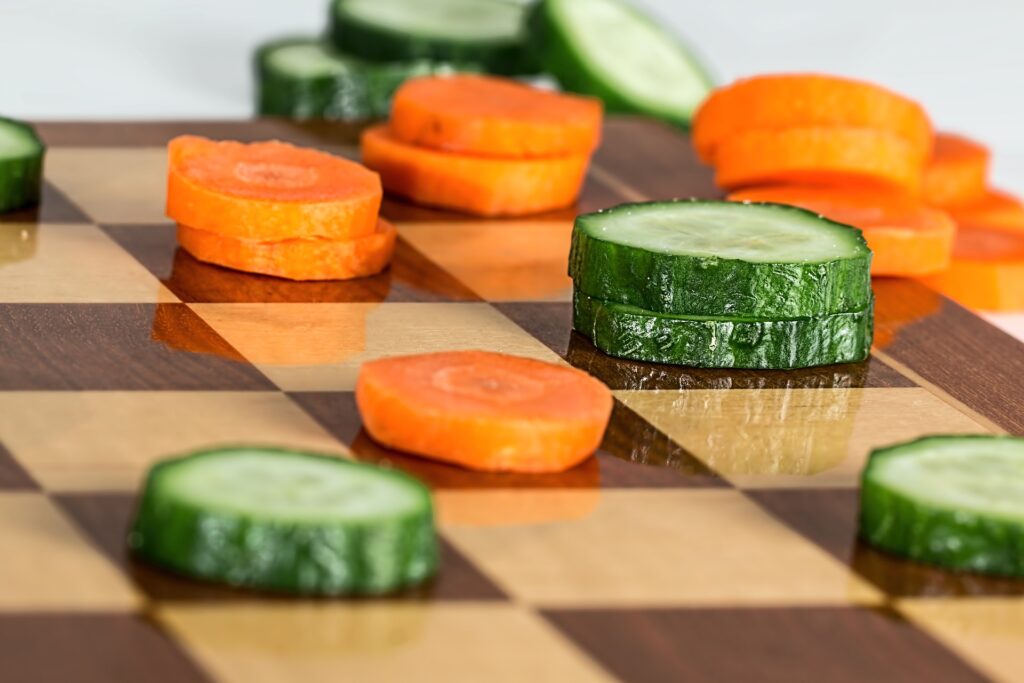The rising childhood obesity rate in the US and abroad calls for efforts aimed at improving child food choice. Some progress is already being made. For instance, in 2012 the United States Department of Agriculture (USDA) updated its nutrition standards for school meals for the first time in 15 years. And practically all public schools offer nutrition education somewhere in their curriculum. However, as any parent or school lunchroom administrator will tell you, simply putting broccoli and carrots in front of a young child is not going to assure increased vegetable consumption! And in my own research in schools in and around Chicago, Illinois, I come across Kindergarteners who confidently tell me that carrots are healthy, and then throw out the carrots provided on their school lunch tray immediately afterward.
While nutrition knowledge and access to healthy food are clearly very important, they alone do not seem to lead to significant changes in child food choice. What then, is the answer? One recent innovation in child food choice is the use of behavioral ‘nudges’ – founded in theories from economics and psychology – to affect behavior change. The National School Lunch Program – which provides free or reduced lunches to low-income students during school – can provide the ideal context for implementing and evaluating such nudges.
In a recent paper (Samek, 2016), I explore a few such simple nudges. I worked with 8 schools and a total of 1,483 children in grades K-6 in a low-income school district south of Chicago. Over 90% of students in this district qualify for the National Free or Reduced School Lunch – meaning that they all receive the school-provided lunch free of charge. These children are also within the demographic of low-income students who are at greatest risk for obesity/overweight and related health problems (see for example here and here). Because children make only one choice in the school lunch – that between white milk and chocolate milk – this is the choice I focused on in the study. Specifically, I focused on encouraging children to choose white milk instead of chocolate milk, which will decrease their sugar consumption.
Each classroom in these schools was randomly assigned to one of three different treatment groups – GIFT, GOAL or CONTROL. In all groups, teachers were asked to read the following message prior to sending children to lunch: “One way to stay healthy is to choose white milk instead of chocolate. It has less sugar, so it is better for you!”
Teachers in the GIFT group were asked to then hand out stickers to all children as a ‘thank you’ for choosing healthy. The GIFT treatment harnesses reciprocity, the idea that a kind act from a teacher will result in a corresponding kind act from a student. The GIFT treatment is an example of an unconditional incentive – all children receive the incentive, whether or not they choose healthy. Teachers in the GOAL group then asked children whether they’d like to set a goal to make the healthier decision, and passed out goal-setting cards to all children. We now know that adults and children alike may want to make the healthier choice, but may have trouble doing so due to self-control problems (in economics, this is referred to as dynamic inconsistency). Setting a goal can act as an internal commitment device, or a tool to help the child stick to their advance decision when faced with the temptations in the school lunch line.

Finally, I hired research assistants to stand at the end of the lunch line on the day of the intervention and count how many children selected the white milk, and how many selected chocolate milk. We found that children in the GIFT treatment increased the choice of white milk by about 30%, and that children in the GOAL treatment increased the choice of the white milk by about 20%, relative to the control group. We also found that the nutritional message alone encouraged children to choose white milk.
These findings show promise for academics and policy-makers alike. For academics, the findings suggest that economic theories can be utilized to design workable interventions in schools. For policy-makers, this suggests that ‘nudges’ could be incorporated in school practices to improve food choices, and that this could be as important as nutrition education and increasing the nutrition standards for school lunches. Importantly, the ‘nudges’ in this experiment are easily scalable and can be successfully implemented by teachers. Next, I hope to design new studies to explore whether these nudges will have impact in the long-term.
Thanks to the research assistants at the Behavioral and Experimental Economics (BEE) Research Group for help carrying out the study discussed here. Thanks to Hannah Walter for help finding sources for this blog post.

You must be logged in to post a comment.